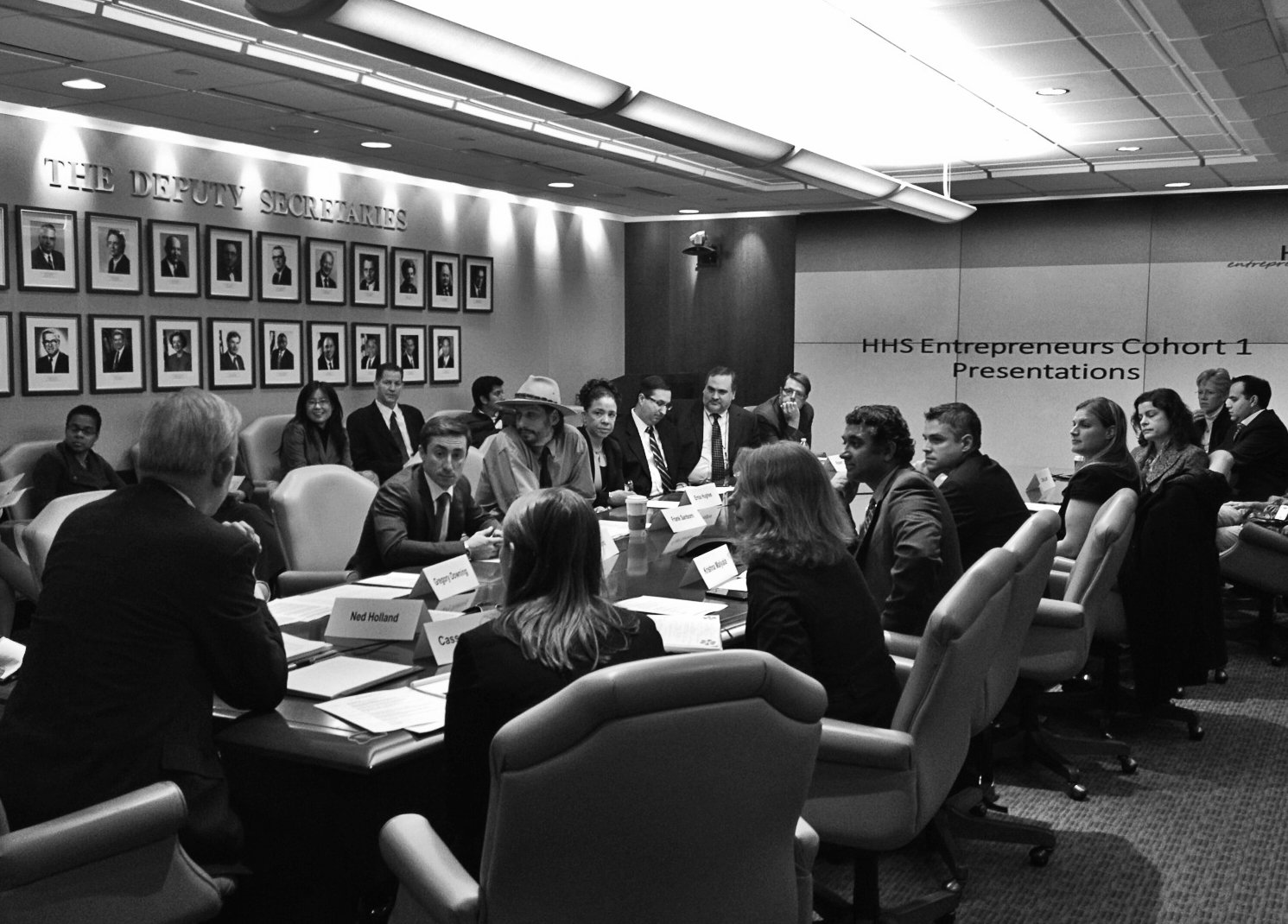
One of the many phrases with which we’ve all become familiar, certainly if we live or spend any time around Washington, is that government needs to operate more like a business.
And while that’s an overly simplistic aphorism that doesn’t take into account any number of things (are you familiar with the failure rate for most new businesses?!), most of the people who attended our first Techonomy Policy event last month in DC would agree that there are certainly any number of lessons government can learn from its corporate brethren.
Enter the Department of Health and Human Services’ (HHS) Entrepreneur-in-Residence (EIR) program. Started in 2012 by then-CTO of HHS, Todd Park, the program recruits external talent to partner with internal HHS teams on high-priority projects for about a year.
Let’s say you’re working at any of the agencies that make up HHS and you’ve got a project or a problem you want to tackle, and you know enough to realize you’re missing some crucial skillset to getting it done. Your team applies to the EIR program and, once accepted as Internal Entrepreneurs, program staff recruit an External Entrepreneur that meets your needs—whether it’s a software engineer, an expert in human-centered design, or a specialist in shipping logistics. The Internal and External Entrepreneurs work together for 13-months and, depending on the state of the project and other factors, the EIR may continue on or leave at the end of that period.
The goal of the program is two-fold: first and foremost, for each project to succeed, and, second, for the entrepreneurs to leave behind a legacy of innovation at HHS.
Infecting them, if you will.
Since 2012, 13 project teams have participated in the program, including a total of 61 career HHS staff and 15 EIRs.
One project is modernizing the paper-based system for tracking organs in the National Organ Procurement and Transplantation Network overseen by the Health Resources and Services Administration. An EIR developed a prototype (including a tablet, scanner, and hand-held printer) within 6 months and tested it on 194 organ procurements in five states.
As part of another project for the Centers for Medicare and Medicaid Services (CMS), an EIR with experience in agile and open-source software development created a prototype for new, flexible architecture and APIs for the CMS National Plan and Provider Enumeration System in 9 months. CMS estimates that the EIR completed the work in half the time and at one-thirtieth of the cost of the traditional approach of hiring outside contractors.
Currently HHS is recruiting for three projects:
- The Food and Drug Administration seeks an EIR with demonstrated leadership experience in developing and implementing complex technology solutions involving multiple stakeholders to create a big data environment composed of aggregated datasets from new drug applications, electronic medical records, wearable technologies, and social media networks.
- The CMS Center for Program Integrity seeks an EIR with experience analyzing and gathering business requirements for IT systems involving multiple stakeholders, to create an information technology solution that will give healthcare providers direct access to information about Medicare claims and billing.
- The CMS Office of Enterprise Data and Analytics seeks an Associate EIR with Java development experience to transform a prototype, for the next generation of CMS Blue Button service, to an enterprise-class platform that can scale to support millions of beneficiaries.















